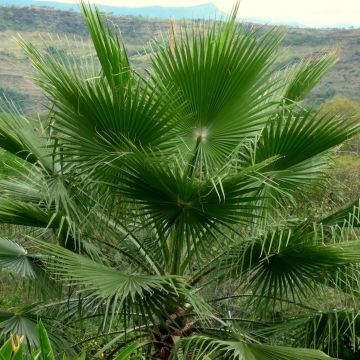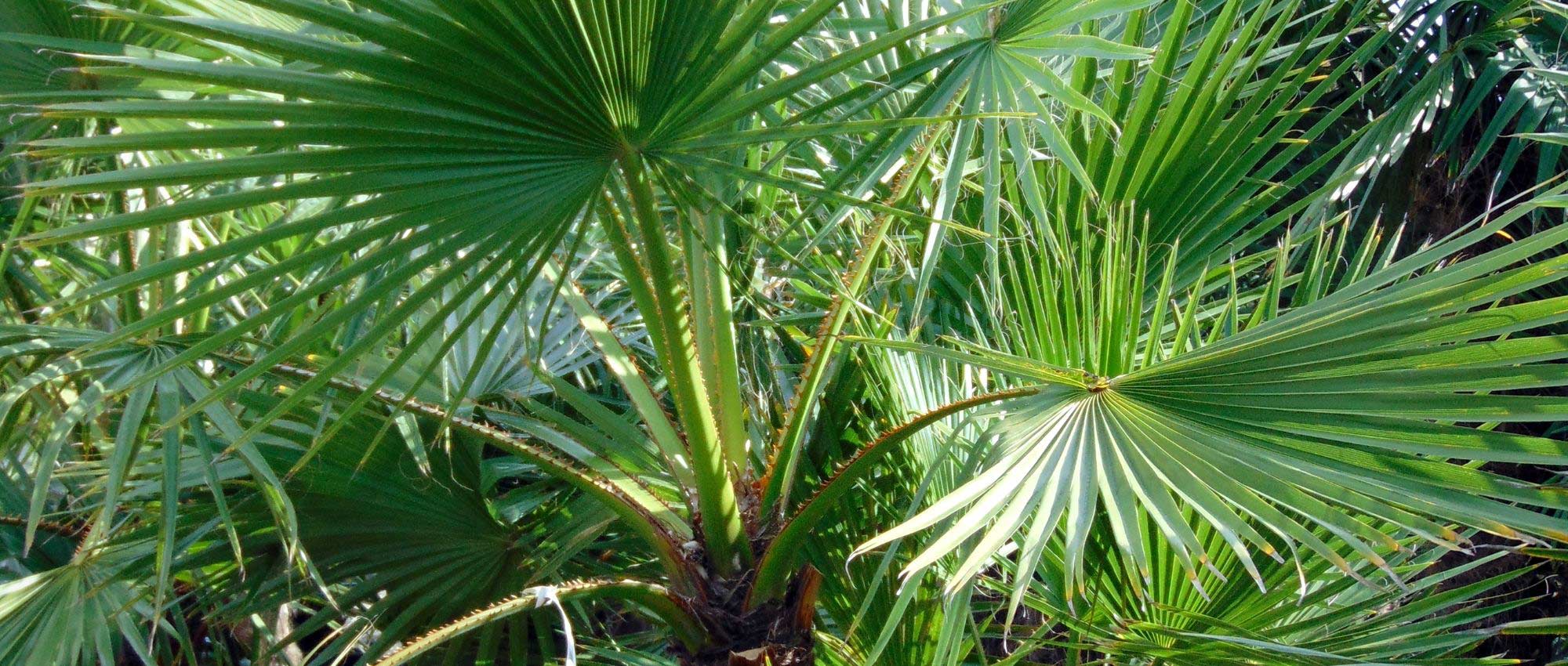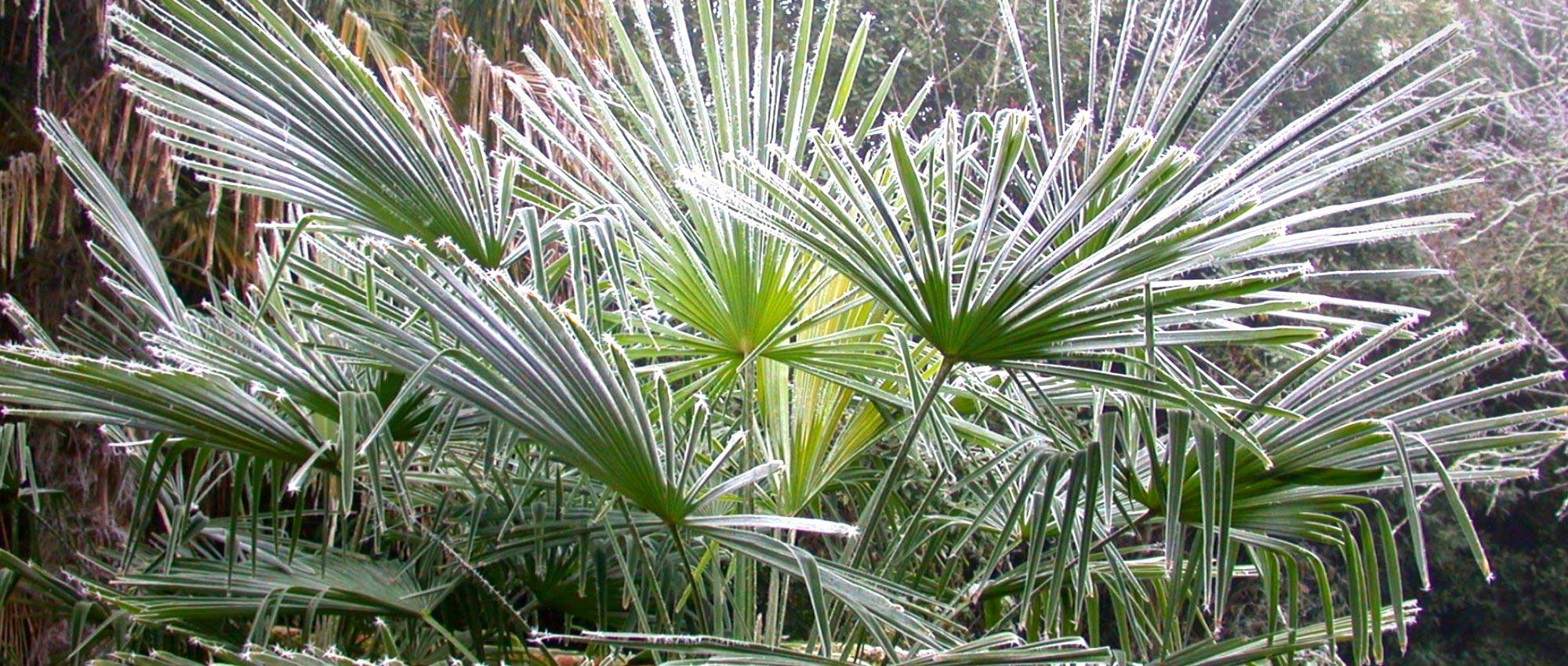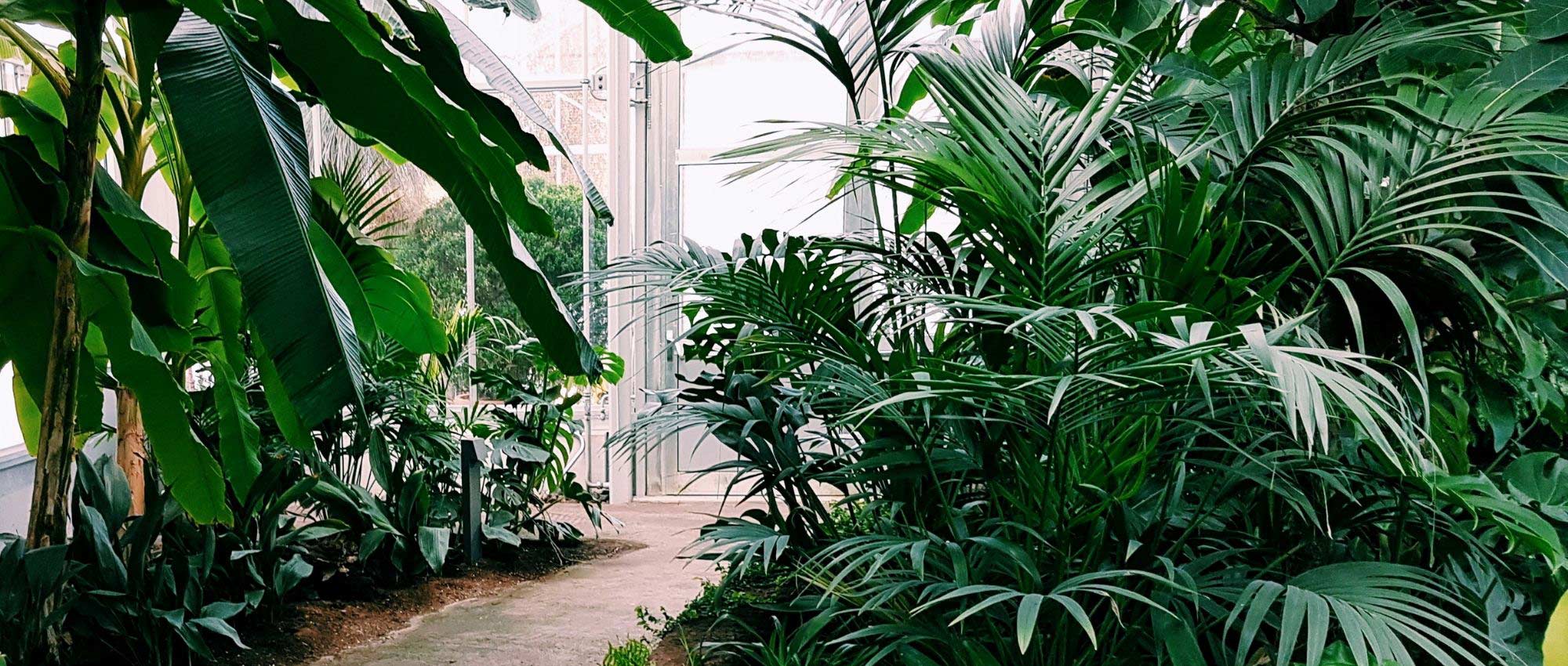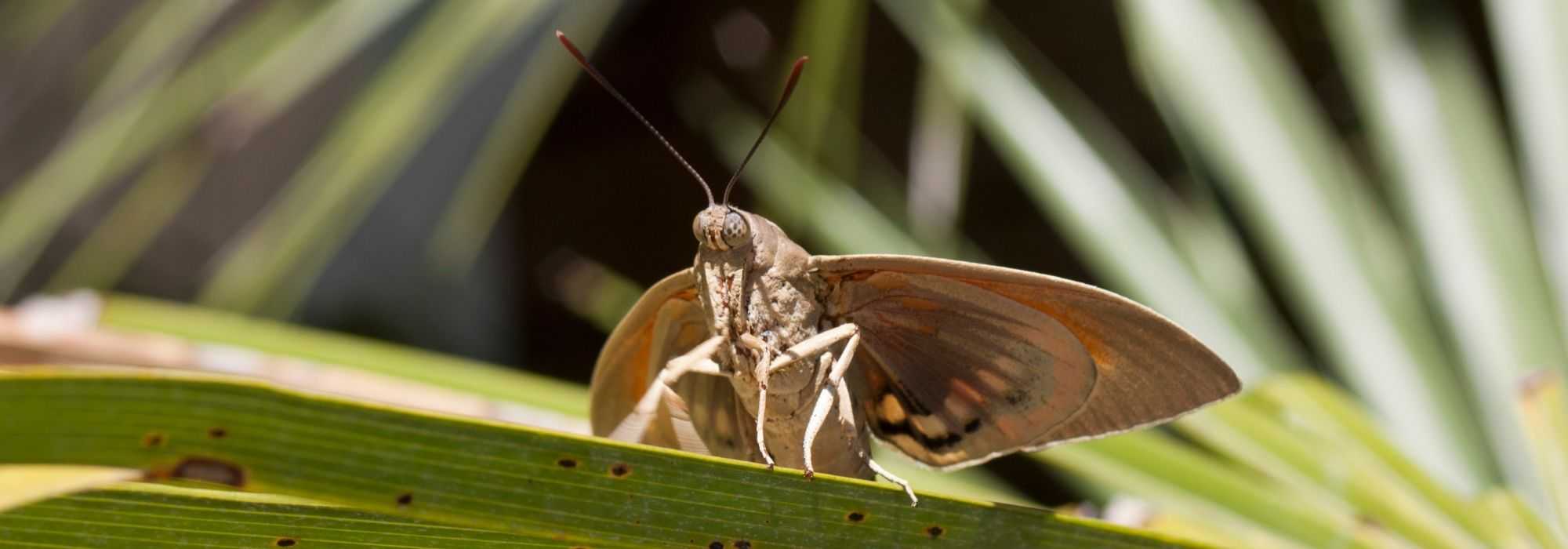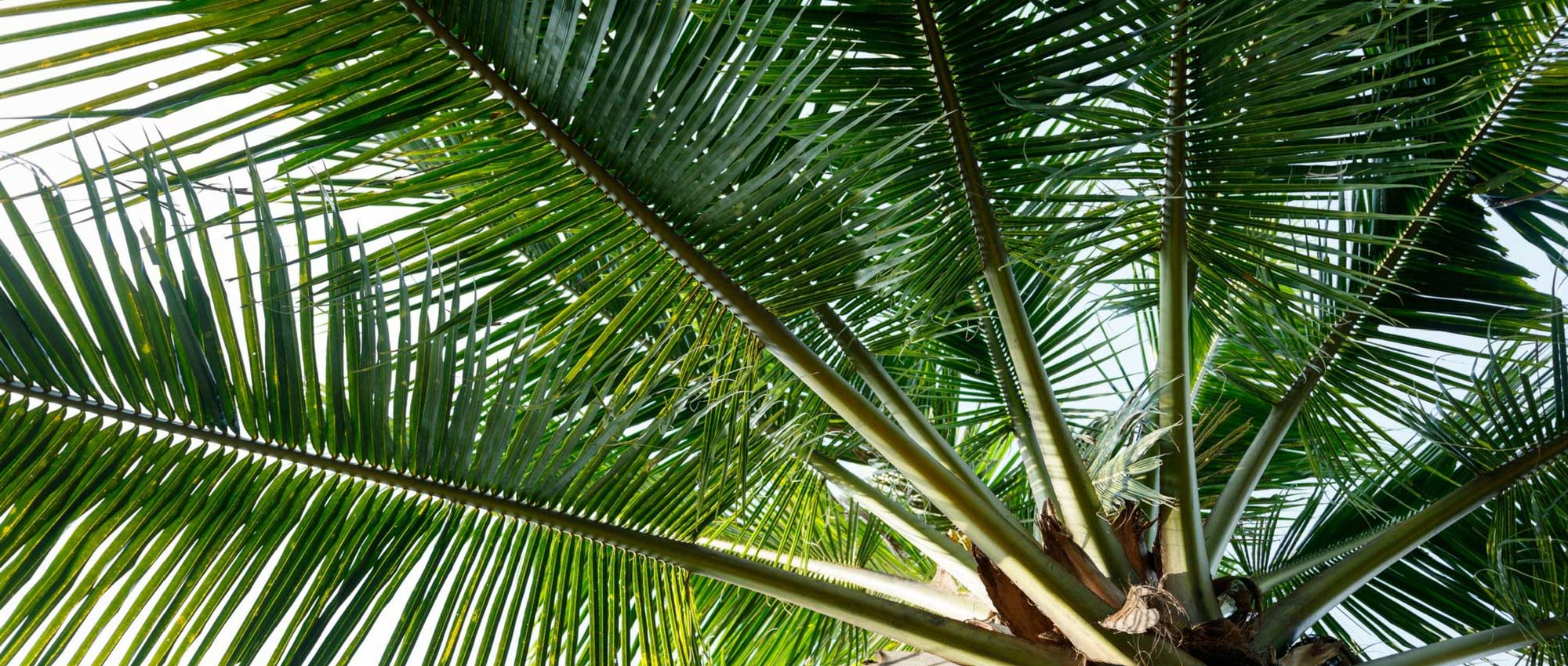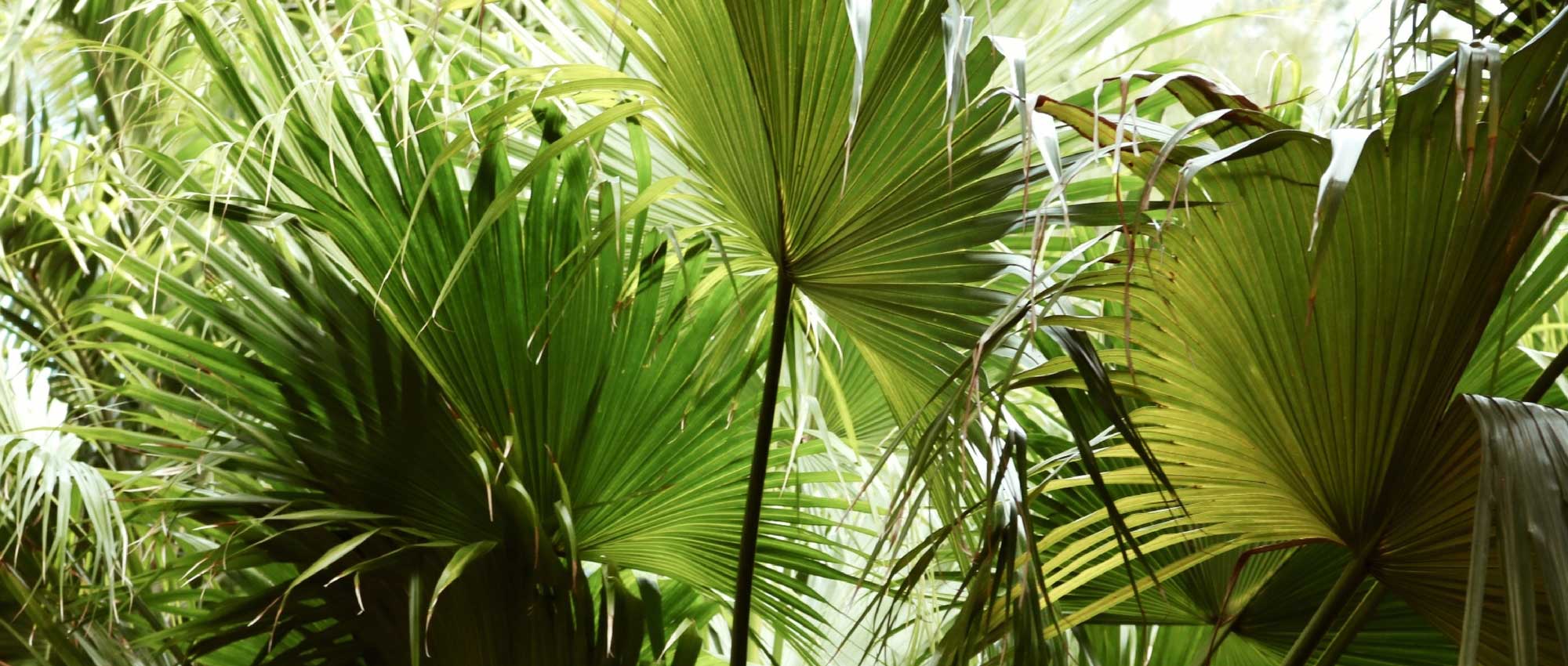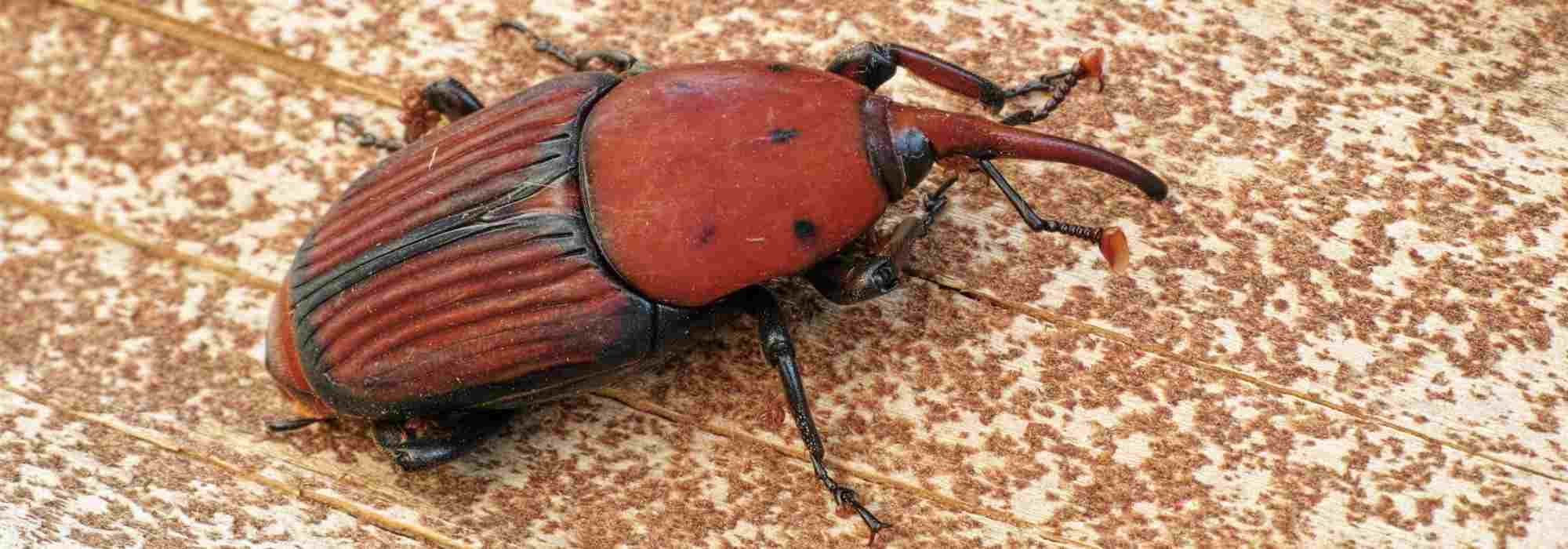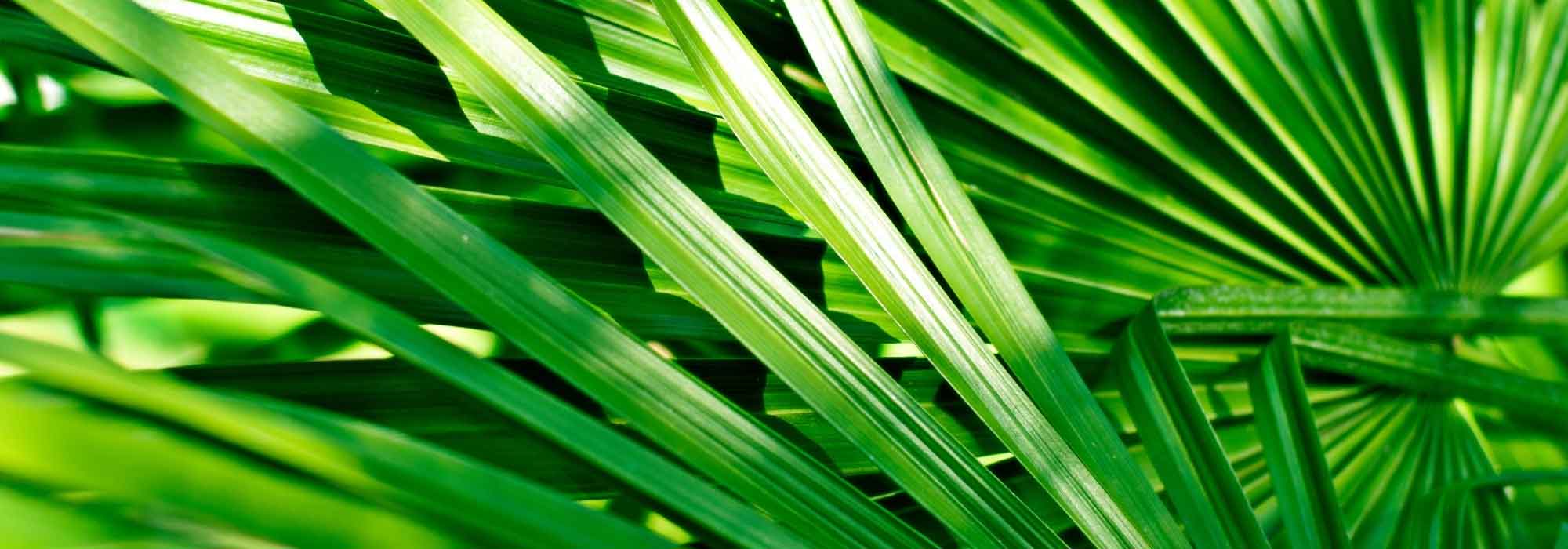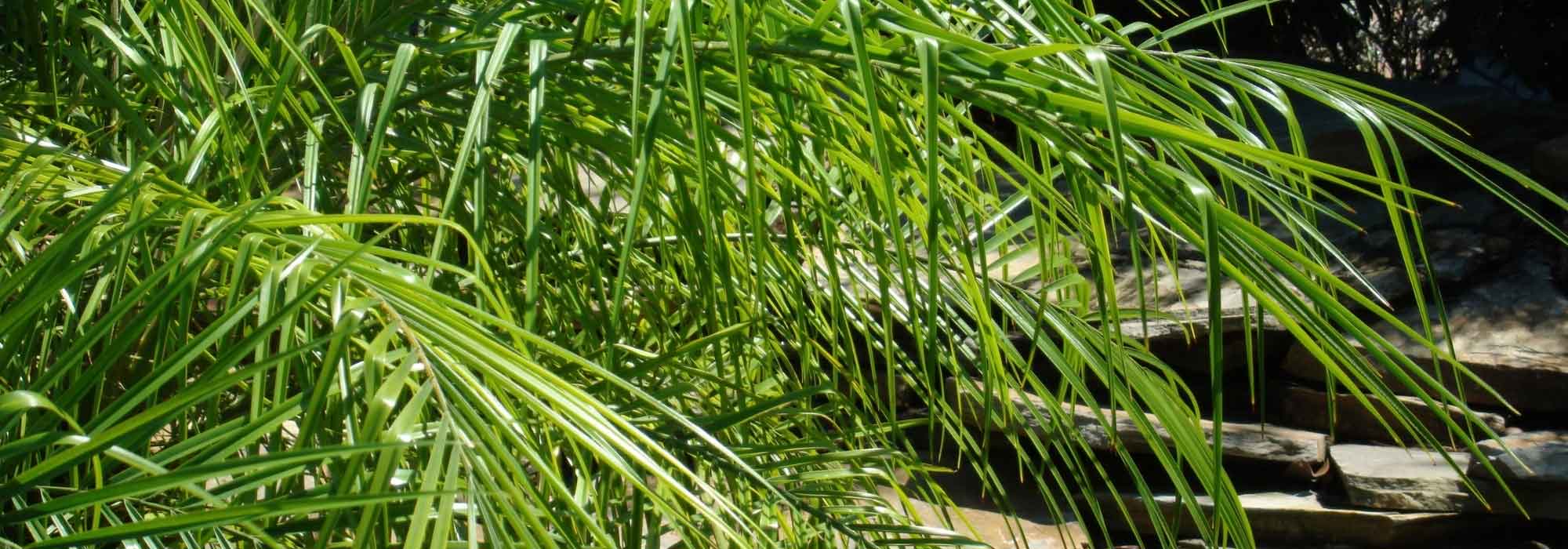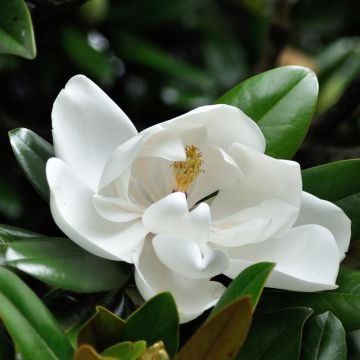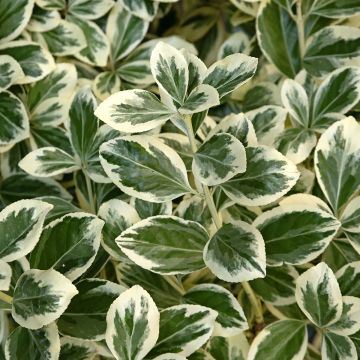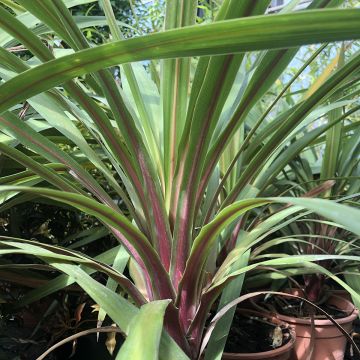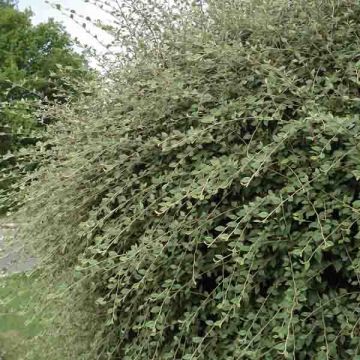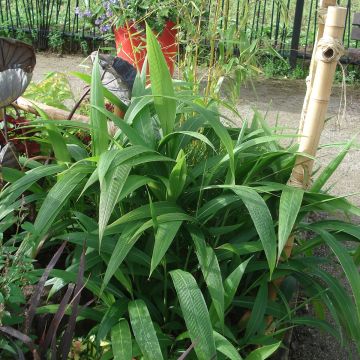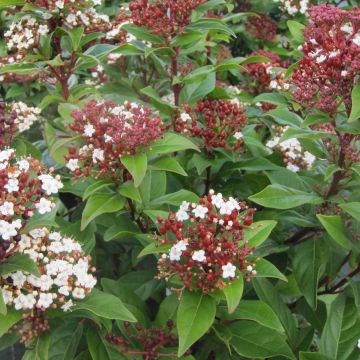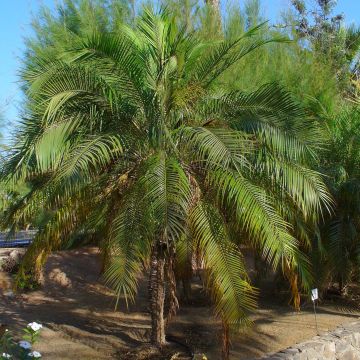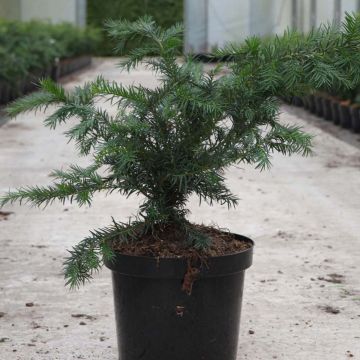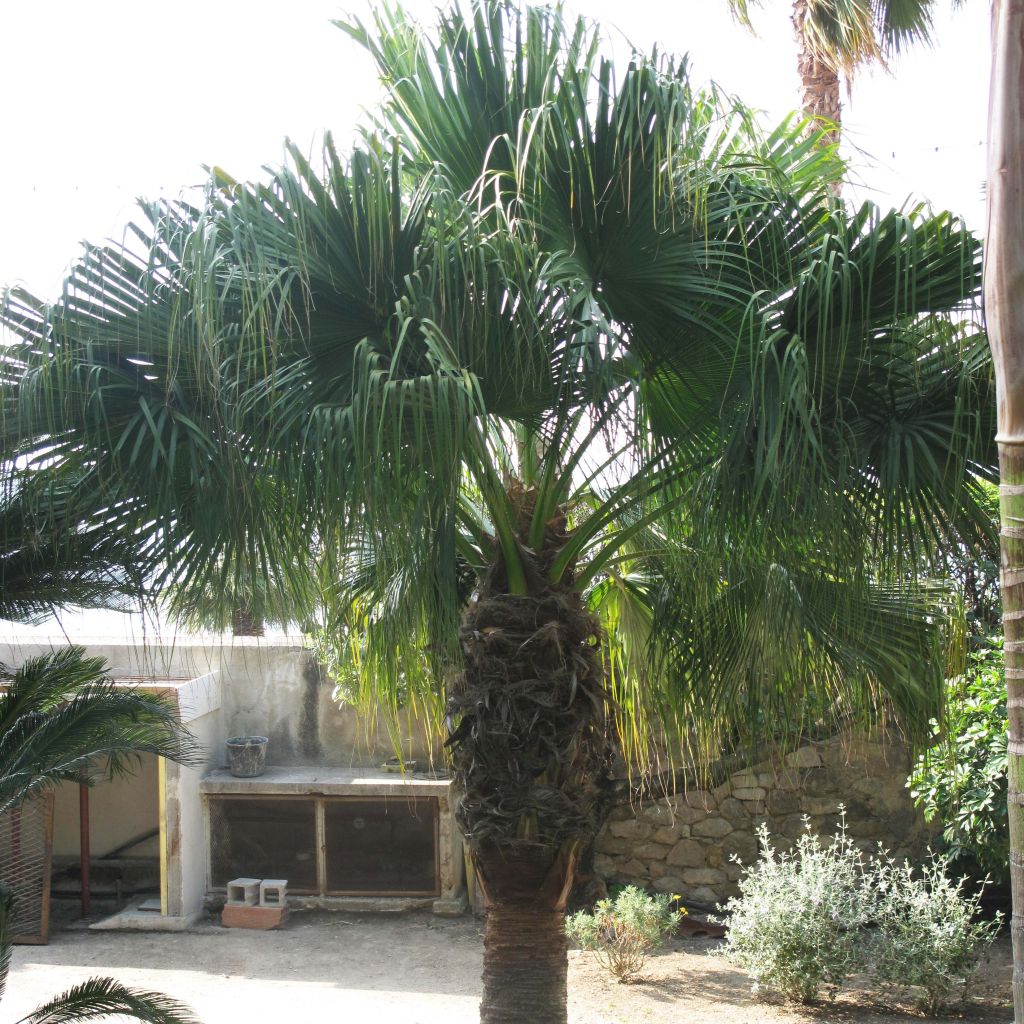

Washingtonia filifera - California Fan Palm
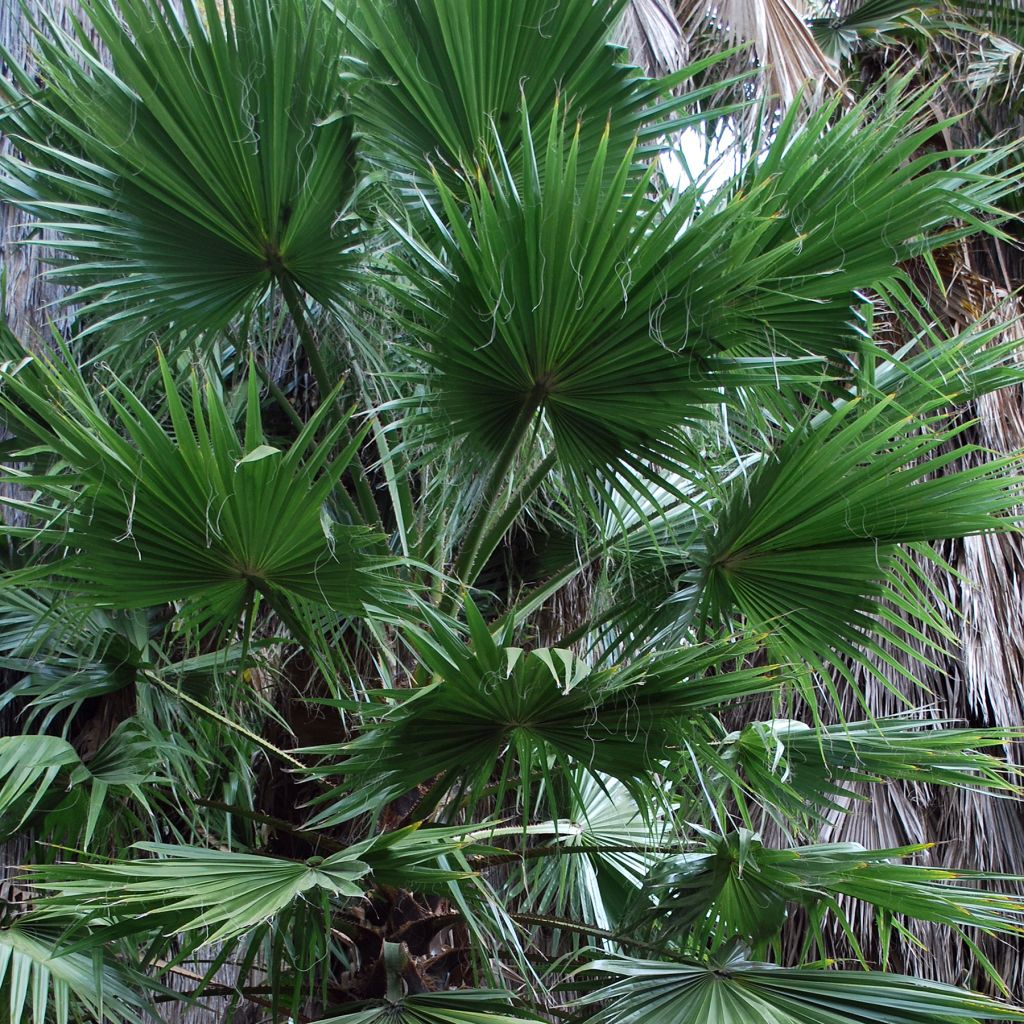

Washingtonia filifera - California Fan Palm
Washingtonia filifera - California Fan Palm
Washingtonia filifera
California Fan Palm, Desert Fan Palm, American Cotton Palm
Hello, I didn't buy this young plant but I just wanted to comment on the presentation photos. The first one is a photo of a Livistona LIVISTONA and the second one is of a WASHINGTONIA robusta! Not very seriate!
mounier, 20/07/2020
Special offer!
Receive a €20 voucher for any order over €90 (excluding delivery costs, credit notes, and plastic-free options)!
1- Add your favorite plants to your cart.
2- Once you have reached €90, confirm your order (you can even choose the delivery date!).
3- As soon as your order is shipped, you will receive an email containing your voucher code, valid for 3 months (90 days).
Your voucher is unique and can only be used once, for any order with a minimum value of €20, excluding delivery costs.
Can be combined with other current offers, non-divisible and non-refundable.
Why not try an alternative variety in stock?
View all →This plant carries a 24 months recovery warranty
More information
We guarantee the quality of our plants for a full growing cycle, and will replace at our expense any plant that fails to recover under normal climatic and planting conditions.

Does this plant fit my garden?
Set up your Plantfit profile →
Description
Washingtonia filifera, also known as the Desert Fan Palm or California Fan Palm, is one of the largest and most impressive hardy palms. Similar to Washingtonia robusta with which it readily hybridises, it is primarily distinguished by a stockier trunk and increased hardiness, allowing it to withstand temperatures as low as -12 °C (10.4 °F) in mild climates and well-drained soil. It grows rapidly, forming a sturdy and wide trunk topped with a crown of large, palmate leaves, which are fanned and bordered by whitish filaments. Appreciated for its elegance and undemanding nature, it tolerates sea spray and is also drought-resistant.
Washingtonia filifera (synonym Washingtonia filamentosa) belongs to the Arecaceae family. It is native to the southwestern United States and northwestern Mexico, where it is found growing naturally in arid locations, in moist gorges and canyons where water is available at depth. This palm, which can reach a height of 17 to 18 metres (56 to 59 feet), is supported by a thick, sometimes 1.2-metre (4 foot)-diameter, fissured brown false trunk (stipe). Its foliage, arranged in a terminal crown, will not exceed 4.5 metres (15 feet) in width. The stipe, widened at the base, gives rise at its top to approximately 30 petioles, each measuring 1.75 metres (6 feet) in length, which bear a very large circular, shiny green leaf, 90 cm (35 in) in diameter, with edges divided into 60 narrow segments from which white filaments emerge, which are highly visible on young plants. The 'petticoat' enveloping the top of the trunk, a characteristic of Washingtonias, is formed by withered and trailing petioles that persist on the plant for a long time. The spectacular flowering occurs on plants that are 20 years old. It only occurs outdoors, in summer, in the form of long, arched inflorescences (up to 4 metres (13 feet)) that extend more than a metre (3 feet) beyond the crown. The numerous flowers, ranging in colour from cream to pink, are followed by the formation of countless small round, black and shiny fruits, each containing a smooth and shiny dark brown to black seed. These fresh seeds germinate very easily.
Highly appreciated as a coastal and mild-climate avenue tree, Washingtonia filifera is among the most commonly cultivated ornamental palm species, along with Washingtonia robusta and Phoenix canariensis, in tropical as well as temperate countries. Irreplaceable and prestigious in mild climates, it can also be grown elsewhere in a large container, which can be stored in a cool, bright, and well-ventilated space during winter. Planted near an entrance or on either side of a gate, or used as a standalone by a pool, it will be magnificent. Like Eucalyptus and large mimosa trees, when used in the background of a flower bed, it creates a typical backdrop for gardens with a Mediterranean theme.
Americans used their leaves as culms and consumed the fruits in the form of flour, as they are edible and have excellent nutritional qualities.
Washingtonia filifera - California Fan Palm in pictures
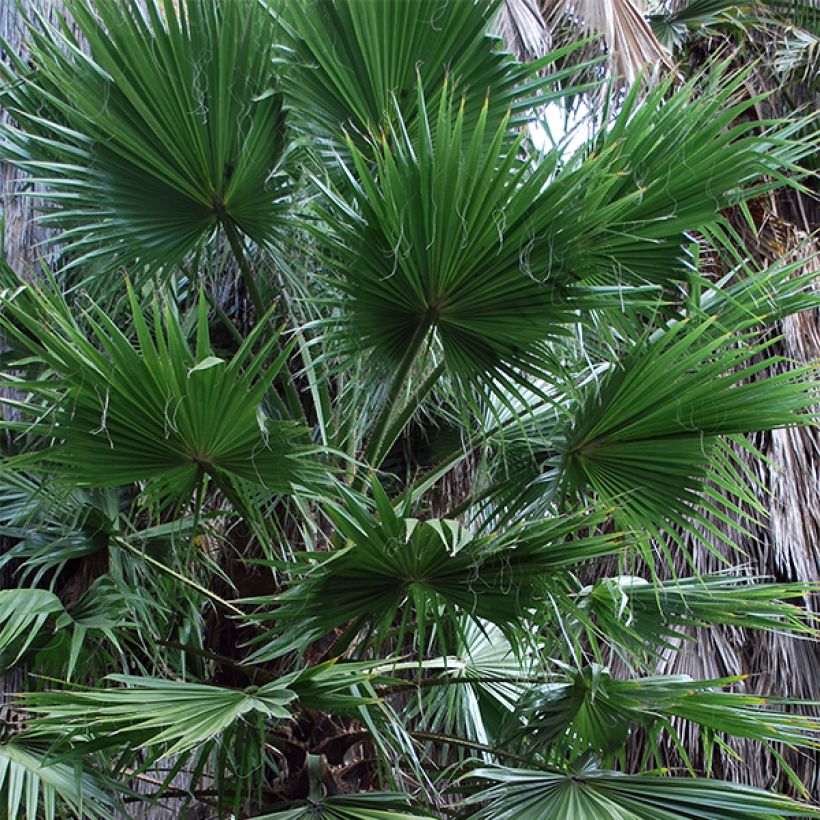

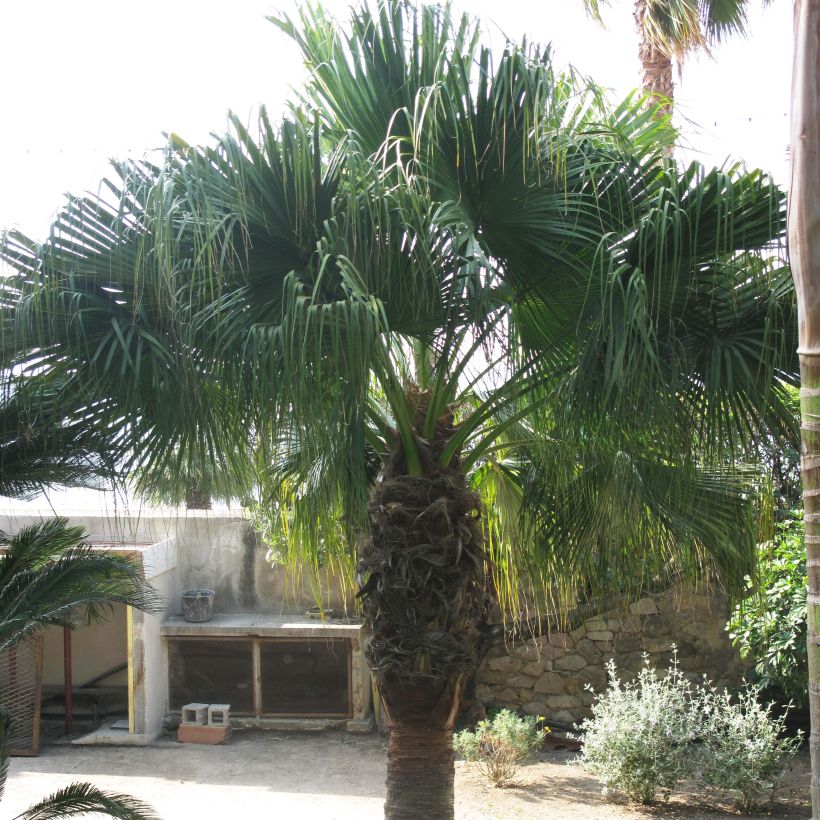

Plant habit
Flowering
Foliage
Botanical data
Washingtonia
filifera
Arecaceae
California Fan Palm, Desert Fan Palm, American Cotton Palm
North America
Other Washingtonia
View all →Planting and care
This palm tree shows very rapid growth. Plant Washingtonia filifera in the ground in mild climates, or in a very large pot in other regions. Install it in well-worked, well-drained soil, and even soil that is poor and dry on the surface. It is indifferent to the nature of the soil, but shows a preference for limestone (or alkaline) soils, even those that are excessively limestone (up to a pH of 9.2), like many palms native to arid areas. It withstands drought once established. The ideal is to plant it in a balanced mixture of potting soil and garden soil. Install it in a sunny location and protect it from cold, dry winds. Water regularly for the first 3 years, especially if the summer is dry. Easy to grow, it requires little maintenance except for pruning the oldest fronds close to the stem.
Washingtonia palms are victims of parasites such as the dreaded and widespread Paysandisia archon (palm-borer moth), a large moth that is found in the UK. Specific preventive treatments are now available.
Planting period
Intended location
Care
Planting & care advice
-
, onOrder confirmed
Reply from on Promesse de fleurs
Similar products
Haven't found what you were looking for?
Hardiness is the lowest winter temperature a plant can endure without suffering serious damage or even dying. However, hardiness is affected by location (a sheltered area, such as a patio), protection (winter cover) and soil type (hardiness is improved by well-drained soil).

Photo Sharing Terms & Conditions
In order to encourage gardeners to interact and share their experiences, Promesse de fleurs offers various media enabling content to be uploaded onto its Site - in particular via the ‘Photo sharing’ module.
The User agrees to refrain from:
- Posting any content that is illegal, prejudicial, insulting, racist, inciteful to hatred, revisionist, contrary to public decency, that infringes on privacy or on the privacy rights of third parties, in particular the publicity rights of persons and goods, intellectual property rights, or the right to privacy.
- Submitting content on behalf of a third party;
- Impersonate the identity of a third party and/or publish any personal information about a third party;
In general, the User undertakes to refrain from any unethical behaviour.
All Content (in particular text, comments, files, images, photos, videos, creative works, etc.), which may be subject to property or intellectual property rights, image or other private rights, shall remain the property of the User, subject to the limited rights granted by the terms of the licence granted by Promesse de fleurs as stated below. Users are at liberty to publish or not to publish such Content on the Site, notably via the ‘Photo Sharing’ facility, and accept that this Content shall be made public and freely accessible, notably on the Internet.
Users further acknowledge, undertake to have ,and guarantee that they hold all necessary rights and permissions to publish such material on the Site, in particular with regard to the legislation in force pertaining to any privacy, property, intellectual property, image, or contractual rights, or rights of any other nature. By publishing such Content on the Site, Users acknowledge accepting full liability as publishers of the Content within the meaning of the law, and grant Promesse de fleurs, free of charge, an inclusive, worldwide licence for the said Content for the entire duration of its publication, including all reproduction, representation, up/downloading, displaying, performing, transmission, and storage rights.
Users also grant permission for their name to be linked to the Content and accept that this link may not always be made available.
By engaging in posting material, Users consent to their Content becoming automatically accessible on the Internet, in particular on other sites and/or blogs and/or web pages of the Promesse de fleurs site, including in particular social pages and the Promesse de fleurs catalogue.
Users may secure the removal of entrusted content free of charge by issuing a simple request via our contact form.
The flowering period indicated on our website applies to countries and regions located in USDA zone 8 (France, the United Kingdom, Ireland, the Netherlands, etc.)
It will vary according to where you live:
- In zones 9 to 10 (Italy, Spain, Greece, etc.), flowering will occur about 2 to 4 weeks earlier.
- In zones 6 to 7 (Germany, Poland, Slovenia, and lower mountainous regions), flowering will be delayed by 2 to 3 weeks.
- In zone 5 (Central Europe, Scandinavia), blooming will be delayed by 3 to 5 weeks.
In temperate climates, pruning of spring-flowering shrubs (forsythia, spireas, etc.) should be done just after flowering.
Pruning of summer-flowering shrubs (Indian Lilac, Perovskia, etc.) can be done in winter or spring.
In cold regions as well as with frost-sensitive plants, avoid pruning too early when severe frosts may still occur.
The planting period indicated on our website applies to countries and regions located in USDA zone 8 (France, United Kingdom, Ireland, Netherlands).
It will vary according to where you live:
- In Mediterranean zones (Marseille, Madrid, Milan, etc.), autumn and winter are the best planting periods.
- In continental zones (Strasbourg, Munich, Vienna, etc.), delay planting by 2 to 3 weeks in spring and bring it forward by 2 to 4 weeks in autumn.
- In mountainous regions (the Alps, Pyrenees, Carpathians, etc.), it is best to plant in late spring (May-June) or late summer (August-September).
The harvesting period indicated on our website applies to countries and regions in USDA zone 8 (France, England, Ireland, the Netherlands).
In colder areas (Scandinavia, Poland, Austria...) fruit and vegetable harvests are likely to be delayed by 3-4 weeks.
In warmer areas (Italy, Spain, Greece, etc.), harvesting will probably take place earlier, depending on weather conditions.
The sowing periods indicated on our website apply to countries and regions within USDA Zone 8 (France, UK, Ireland, Netherlands).
In colder areas (Scandinavia, Poland, Austria...), delay any outdoor sowing by 3-4 weeks, or sow under glass.
In warmer climes (Italy, Spain, Greece, etc.), bring outdoor sowing forward by a few weeks.






























